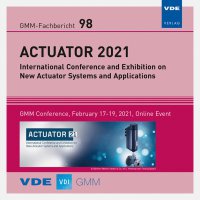Slipring rotor made by Additive Manufacturing: redesign, manufacturing and validation testing for space applications
Conference: ACTUATOR - International Conference and Exhibition on New Actuator Systems and Applications 2021
02/17/2021 - 02/19/2021 at Online
Proceedings: GMM-Fb. 98: ACTUATOR 2021
Pages: 4Language: englishTyp: PDF
Authors:
Kiener, Lionel; Saudan, Herve; Novo, David; Lani, Sebastien; Bernard, Gaetan (CSEM SA, Neuchâtel, Switzerland)
Miler, Mickael; Bilbeau, Damien (RUAG Slip Rings SA, Nyon, Switzerland)
Abstract:
Today, Additive Manufacturing (AM) is widely recognized as a key enabling technology for various industrial sectors such as automotive, machine-tool but also the space industry. Metallic AM opens promising perspectives for performance and costs optimization featuring enhanced functions. Each of these perspectives were harnessed in the work reported here, which consists in the redesign and qualification of a space slipring assembly rotor (SRA rotor) based on an Additive Manufacturing process. In its current state-of-the-art architecture, the rotor part of an SRA consists of a high-precision assembly of conductive rings, insulating barriers and electrical wires, all of them interfaced to structural parts. For a reference number of thirty electrical channels, the number of parts to be assembled lies between ninety and hundred, depending on the assembly approach. The new rotor concept developed consists of an AM-based monolithic structure, which includes the two essential features of the rotor: conductive rings and electrical wires. The structure as built by AM also includes a sacrificial surrounding shell which makes it possible to cast the inner volume of the rotor with synthetic resin and therefore to create its third essential feature: the insulating barriers. The part is then re-machined to remove the surrounding shell and to give the rotor its final shape. Chemical and galvanic plating treatments are finally applied to optimize the surface properties of the conductive rings. This new design allows to reduce the number of parts, inducing a drastic decrease in the time required to assemble the rotor and a significant increase of the reliability. The partnership between RUAG Slip Rings SA (RSSR) and CSEM SA continues to optimize the design of the AM-based SRA rotor and to perform a detailed qualification at SRA level. In parallel, a conventionally produced SRA rotor will be procured and qualified for benchmarking purposes, following the same qualification flow. At the same time, several innovative features pertaining to the SRA stator will be qualified. Funded by the Swiss Space Office, this development will reach a TRL7. The complete development, starting from the re-design for AM, manufacturing, post-processing and finally testing is presented.


